
Is the SIE exam coming up? What about the GRE? Not to fear – this is your comprehensive guide to for how to study! Here’s what we’ll cover today to help you conquer that upcoming test:
Prepare Mentally and Physically
Explore Memorization Techniques
Read Effectively with Reading Techniques
Utilize Note-taking Strategies
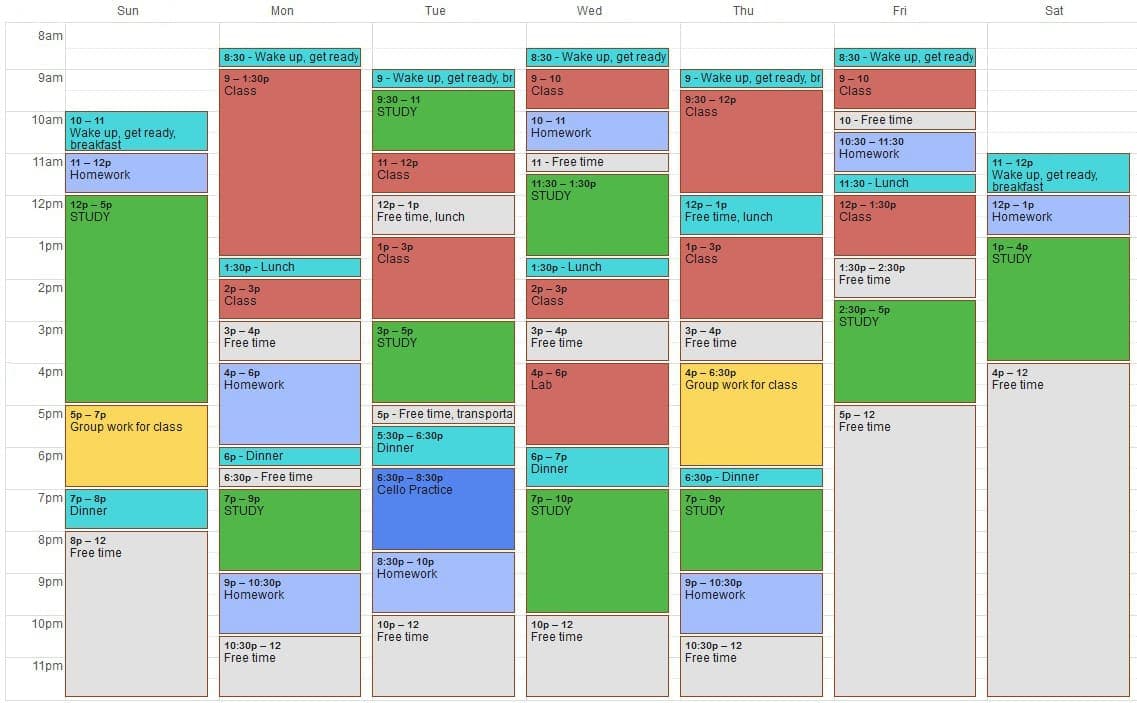
First things first: You’ve got to have a plan! Create a quick time chart of all your current activities to figure out how much time you can devote to studying. Then determine your study goals. Are they realistic? Do you have time? Do you need to plan to work harder?
OK, so maybe you don’t have a rock solid plan just yet. That’s okay – let’s build it together! But first, some basics about when to study… and when not to.
Studying a little bit every day results in better learning than waiting to cram at the last minute. Basically, if you pace yourself, your brain will thank you – you’ll remember things better and be less stressed.
Plan to study a little bit every day to reach your goal. 10 hours of studying over 10 days is much more effective than 10 hours in one day. In fact, studying too much can actually be counterproductive – a study session longer than 3 hours can be wasteful. You get bored, and studies have shown that your learning actually slows down.
Figure out the best study speed for you and adjust accordingly. Plan to use more time if you study slowly. Create a schedule that you will actually stick to, and commit yourself to it.

Try studying in the afternoon or early evening. The best is when it’s during the part of the day when you’re most awake – bonus points if it’s after relaxing a bit to clear your mind. Morning people, you’re free to study in the morning… but that might be too tall an order for the rest of us. You want to set up a study time where you know you’ll be likely to do it – creating the habit is more important than anything else.
The most important thing is that it’s a time where you’ll be awake and able to consistently study to create a habit.
Interestingly, studies have shown that you are more likely to remember the material you look at in the hour before going to bed. However, don’t study later than your usual bedtime – you may fall asleep or be tempted to go to sleep, and you won’t be as focused.
And of course, make sure you schedule a time where you won’t be distracted. If you’re thinking about breaking out the books on Friday night, be honest with yourself about whether you’ll really be happy doing that.
Plan to prioritize certain material. Start by studying the most important chapters – whether that’s basic information needed to understand more complex concepts or topics that are weighted heavily in the test score. Your brain is freshest when you start.
Learn general concepts first. Don’t learn all the details until you know the main ideas. Make sure you test yourself with multiple practice problems related to the concept – so that you really understand it and not just know how to answer one type of question.
Study what you miss. Avoid simply reading material from beginning to end. Study the hard stuff first – then go back and review everything and mark what you miss or don’t know. Now you have a focused list of the vocab or concepts you need to work on the most.
Homework and studying aren’t the same. Homework assignments reinforce what you learn by studying, but they accomplish different goals in your brain. Studying helps you learn the material, whereas homework helps you apply what you’ve learned.
Leave time for both studying the material and completing homework assignments related to what you’re studying in your study sessions – you’ll be grateful to have both experiences tied together.
And studying isn’t just for tests anymore. If you want to get ahead, plan to study throughout the course to stay sharp on the material – not just for exams.
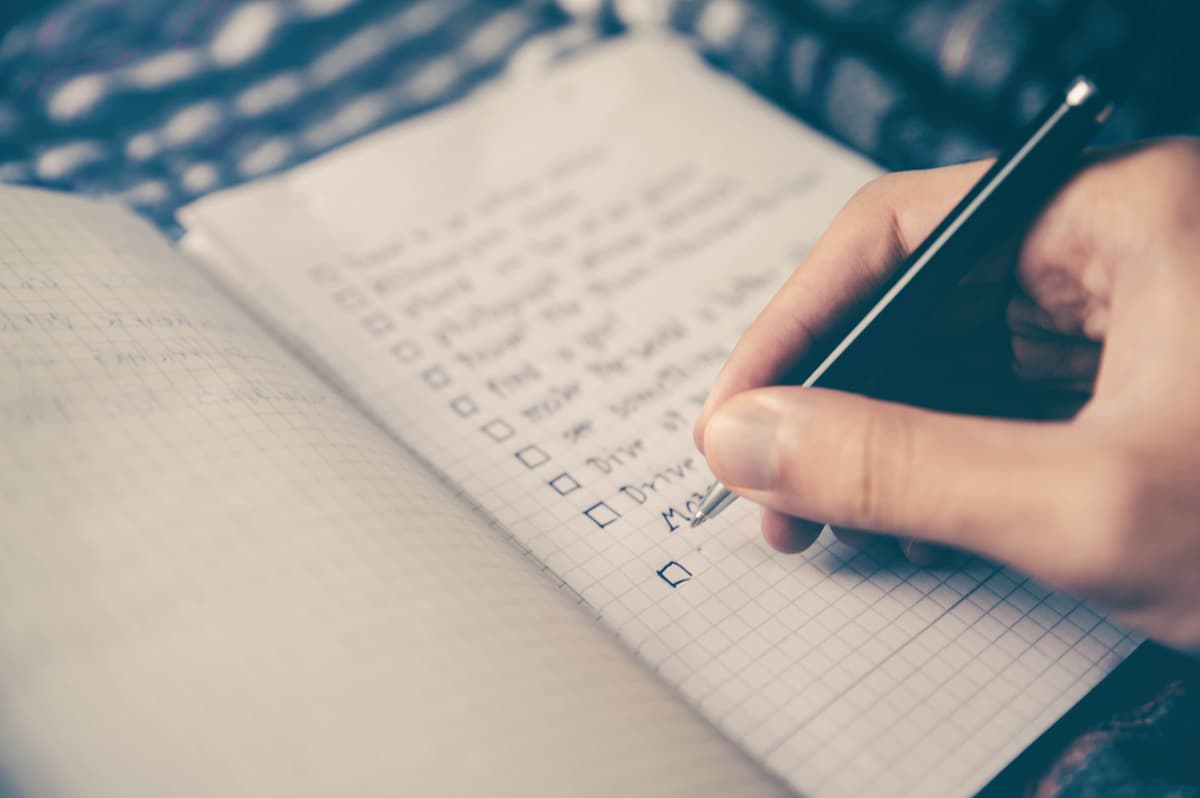
It’s time to put together your schedule. First, make a complete weekly schedule – there’s no way to know what will change week-to-week, but establishing a baseline from a schedule for the upcoming week is the best way to start. Plan time for everything: eating, dressing, commuting, labs, classes, etc. Balance your school, work, and extra-curricular stuff. You might discover you’ve got to give up a bit of that after-school free time to meet your study goals. That’s great, actually – this is why we plan!
Once you’ve set up your schedule for the next week, give it a test run. Do what you can to stick to the schedule closely – and make note of what’s working. Then, adjust for the following week with your experience as your guide. You may learn more about how you study – you may hate studying at night, or lose focus on Sundays before Game of Thrones. Let this inform your next week’s schedule and make it one you love (or realistically put up with) and one you stick to.
Allocate the right amount of time per class for studying. For college classes, a typical recommendation is 2-3 hours of studying per week for each credit hour of classes – that’s at least 24 hours of weekly study for a full-time class schedule!
Seems crazy, right? Well, a lot more students hit close to this number than you might think – USA Today finds that the average student spends 17 hours on studying and homework per week. Your mileage will vary, but make sure that you’re allocating enough time for each class and be realistic about what will be needed to reach your goals.
This might seem like the greatest part of the schedule, but seriously… Plan to take short breaks frequently – at least 5 minutes every hour of studying.
Breaks make you more productive – you’ll remember the material better. In fact, people are more likely to remember things from the beginning and end of each study session rather than the middle. Breaks create more “beginnings” and “ends” to study times that bookmark things you’ve learned in your brain.
Group studying can help people stay focused and accountable – there’s nothing like having your friends with you to keep you honest! Make sure your group is made of people who are actually interested, motivated, and serious about studying the test material – otherwise you’ll just reinforce each other’s bad behavior. Try to meet at least once per week to keep it consistent. The topics can change depending on what classes your friends have to study for, just make sure you actually meet – there’s always something to go over!
Try getting 3-4 friends or classmates together to learn from each other. Some ideas for group work:
So you’ve completed your weekly study schedule. You’ve set aside a specific time to study. Now, let’s become physically and mentally ready to use the time most effectively.

Healthy living improves the brain and memory. The better you take care of yourself, the more effective you will be at studying and during class. Even if you’re not active, try to get some aerobic exercise like biking or walking. Doing this right before studying is even better.
During study sessions, snack wisely: eat healthy, nutritious foods that aren’t too heavy. Try to stay away from foods with too much sugar and fat. Lots of sugar and carbs can make you crash a little while after eating. Fatty foods are satisfying but might end up slowing you down as well. Stay away from my favorite college dinner of fresh Belgian waffles topped with maple syrup and 3 scoops of strawberry ice cream… not exactly a recipe for success :).
Try not to think about anything that doesn’t have to do with the topic of study – whether that’s issues with another class or anything else that might be bothering you. Put that aside and use studying time as “me time.” Listening to relaxing music such as classical or jazz can relieve some of the boredom of studying and keep your mind free of distractions. Meditating for a few minutes prior to starting can be very effective – check out meditation apps like Headspace to get a little guidance with that.

Study regularly and often – but not always for long periods. Take breaks: at least 5 minutes every hour of studying. For the most effective break, do something physically active like walking or jumping jacks. Try integrating standing into your studying as well – it keeps your body and brain going plus it breaks up your routine.
Just be sure to treat yourself: you’ve earned it. Reinforce your habits by rewarding yourself for a job well done. Try a snack, a walk around the block, spending a few minutes on Twitter… something entertaining.
Keep a positive outlook about studying – it actually makes your studying more effective if you’re positive about it. How’s that for the power of positivity?
Focus on what you’re doing right – you’ve likely learned most of the material successfully and are only stuck on a few specific parts. Notice small improvements: focus on day-to-day progress and find motivations while you study. Feel positive even from small gains; don’t wait until some time when you know absolutely everything for the test to feel a sense of accomplishment.
If you’re feeling burned out, you’re probably not studying effectively. This is doubly bad – you’re not using your time effectively and you’re probably not going to remember what you are learning anyway. You might as well take a break or go to sleep, and then try again once you are refreshed.
This doesn’t mean stopping every time you’re tired – remember those breaks and snacks – but you should be aware of when you’re learning and when you’re just going through the motions.
In a longer term sense, stop studying only when you feel confident in the material. Don’t stop when you’re barely getting a passing grade or you’ve learned something for the very first time – stop only once you’ve mastered concepts by testing them in multiple ways.
Find a productive study environment: a comfortable, quiet place to study, with good lighting and few distractions. Above all, study in a quiet place. Ideally, you would have one good study spot for each place you’ve scheduled yourself to study, whether that’s at home, at school, or near work.

Eliminate those electronic distractions: if you’re distracted by social media, try installing a blocker to block available sites during study time. It seems silly, but it really works.
Lastly, have all your study material in front of you. Make sure it’s everything you need for the subject and that you won’t need to break your study routine to go find material after starting. This will make sure you stay focused and make the most of your time.
Choose background music carefully. Listen to familiar music if you don’t find it distracting, but the primary goal is to find music that will not distract you, not music that you love. Keep volume at a moderate level so you can think. Avoid the radio and buy Premium for Spotify or other services; commercials are distracting and will break your mental flow while you’re studying. It’s well worth the price of a couple coffees a month.

Some people prefer pure silence. If you’re distracted by music, try listening to background sounds instead – the white noise will block outside distractions and get you in the right frame of mind for studying. We like Noizio – it’s free and works on your computer or phone.
Keep the television off while you’re studying. This can distract you a lot… voices engage the language center of the brain and keep your attention on the TV. We’ve seen a lot of people study while watching TV, and the results are clear – you’re simply not as effective when doing both.
Anticipate for text messages coming in, friends calling, Facebook-based distractions, etc. Don’t give in! Find a way to isolate yourself during study sessions – both physically and digitally via Airplane Mode or turning off WiFi.
Schedule studying during times you won’t be tempted by other activities – avoid studying on Friday night or next to the stadium during a big game.
Ask for help when you’re stuck – peers first, then teaching assistants, and then instructors or professors if you’re still lost. You’ll learn the most by seeking out help – not slamming your head against the problem you’re stuck on. If no one’s around, try googling it – you might be surprised at the number of great education websites out there.

Now you’re studying, but how do we make that as effective as possible? Let’s explore the most effective study methods for memorization and retention of information.
Create an outline or summary by combining notes with highlighted text to make an outline of material. This is essentially a fancy version of flash cards.
When making summaries, use different colors to help your brain key in on different points.
This is a handy, one-page sheet laying out important information from the material you want to study. Do this by hand or on the computer. If you type it into the computer, you get more control over layout.
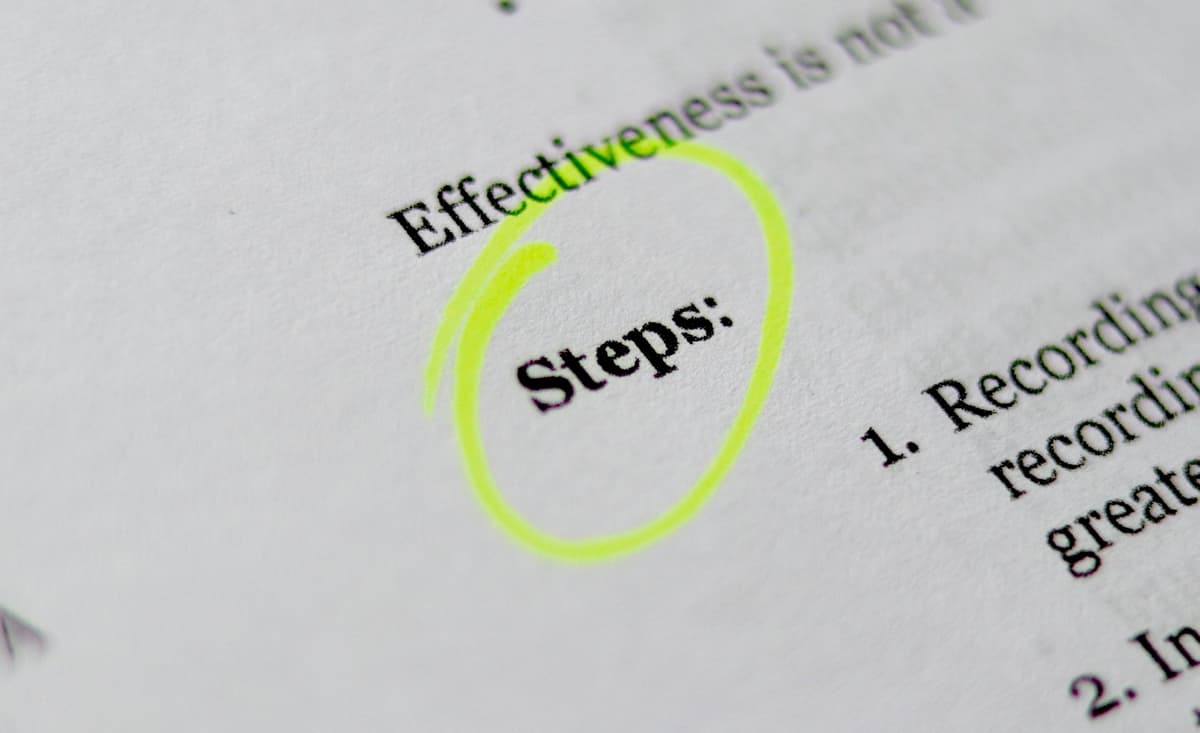
Highlight the most important points of the body of the text using a highlighter. You can then read just these portions.
Highlight using sticky notes if you don’t own the book. Review these highlights periodically.
Do as much as you can to practice with actual exam questions. Ask your professor for old exams or old exam questions – or ask other students. For essay questions, make up example questions and answer them. The more practice you get, the better you’ll do on the real thing.
Making flash cards is always helpful for memorization. Be sure to focus on one concept per card. That way, you can test your knowledge of each concept by itself.
Try reading information out loud. This strengthens memory through both seeing and hearing the information. Just make sure you’re not disturbing other people if you’re in a quiet place like a library.
Also, try teaching the material to someone else – there’s no faster way to reinforce the concepts in your own mind and also find out where your gaps in understanding lie.
Whether you write notes down by hand or type them up in your computer, recording information that you’ve learned helps log it into your memory. Try both – you may learn better when handwriting things than when typing.
Do this after looking over material. Hide it, then try to write it down, then compare your version to the original. Did you get it all right?
Try retyping and summarizing notes you have during class. Also, replay recorded lectures.
Use active reading. Try changing your reading speed to improve comprehension for difficult subjects. Ideal reading speed is usually faster for fictional works and slower for fact-dense technical subjects.
Plan reading sessions in short periods throughout the day. Be sure not to simply re-read the textbook to study for the test: a 2009 study by Callendar and McDaniel shows that simply re-reading the textbook has little or no benefit when studying for the test.
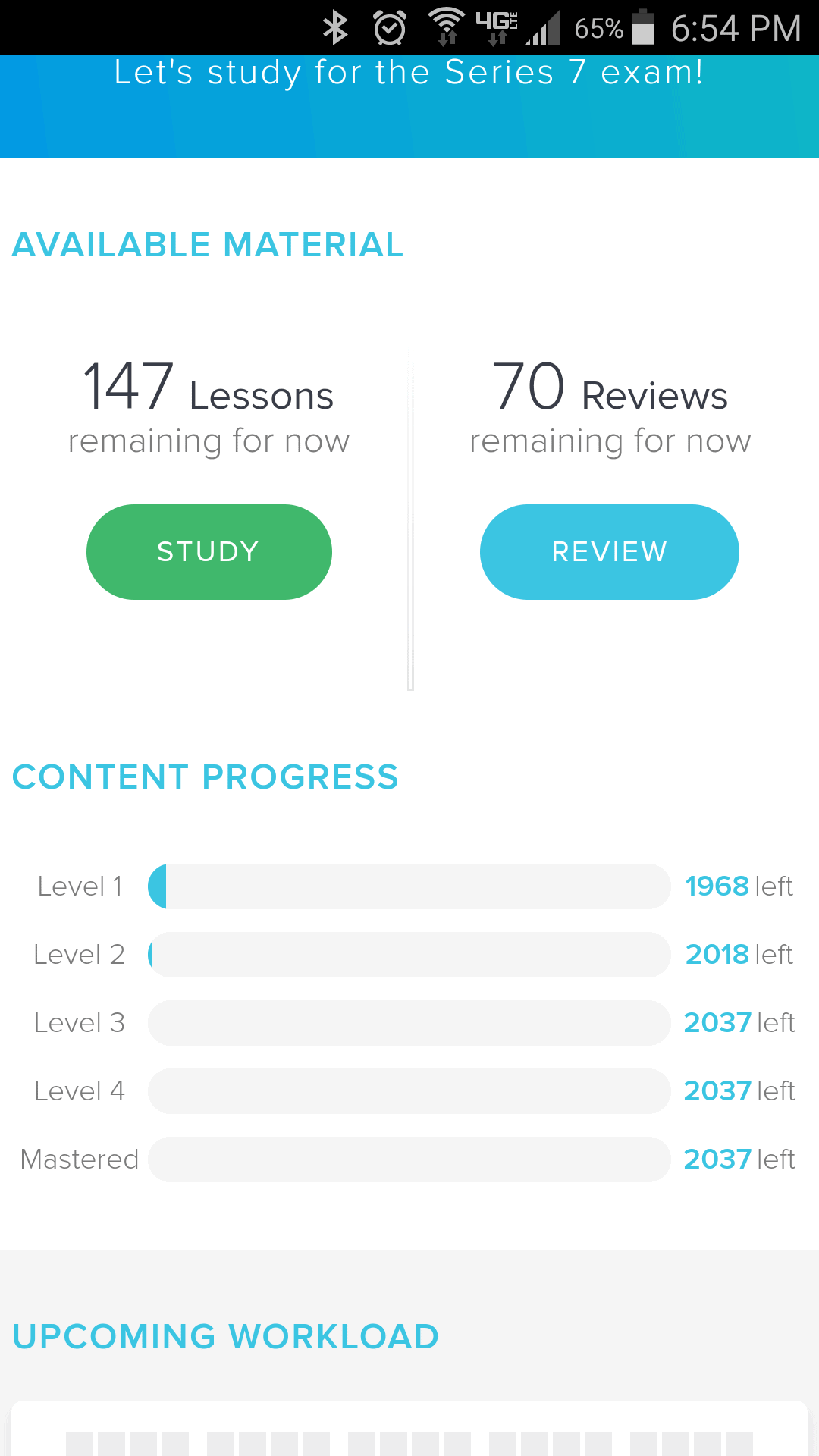
Embrace new technologies. Try new learning tech: online tools, social media, blogs, videos, and mobile apps.
Study apps leverage the sort of tech that became available only recently – apps can create personalized learning schedules, use adaptive learning, provide continual quizzing, and use spaced repetition to help students review material at exactly the right times before they would forget something. Most importantly, they’re convenient – having your study material on your phone can make it easy to keep up with your material as you go about your day.
(Side note: We make study apps for professional exams like the FINRA SIE or GRE. Check out our website to learn more.)
Most studying involves at least some memorization, so memorizing effectively is really important. Let’s explore some well regarded tactics for doing so.

Turn lessons into made-up stories in your mind. Making things into crazy, creative, interesting, ridiculous, and outlandish stories helps you key in on the memory later.
Personally, I have used this zillions of times across many subjects after I learned about it in a psychology class – highly recommended. If you chuckle during the test while recalling, you’re in the money.
The mnemonic peg system is helpful for memorizing lists. Associate rhyming words with the numbers 1 through 10. Make up silly associations, to go with each word, that link you to a memory of each item on the list. You can even make up acronyms for things you want to remember with the first letter of each word. Whatever helps works.
Associate facts to memorize with things you can learn and recall easily. Take advantage of the style in which you learn best. You could use image-word associations, acronyms and mnemonic devices, organize information with a mind map, or use visualization skills by constructing a movie inside your head. Whatever helps you remember things.
Link memories to each other – you can link various facts together, like when you need to memorize chemical reactions, or you can link from intellectual concepts to real-life experiences… anything to help you grab onto each fact and recall it later.
Take advantage of these:
Analogy: Compare dissimilar items to each other by noticing some things they have in common.
Spaced repetition: Cover the same concepts multiple times over a longer time period to reinforce it in your brain. More on this below.
Chunking: Break complex concepts or long amounts of information into simpler parts to make them easier to memorize.
Use a keyword to focus yourself. For example, use the word “piano” when reading an article about piano. Then, repeat this word to recall the information.
Extend the use of flashcards for memorization by using full 8.5 x 11 sheets of paper, not just 3 x 5 note cards. You can fit more information on a bigger sheet.

OK, here’s a fun one: Build a palace in your mind, filled with items that you’re memorizing. Basically, this involves using visualization techniques to organize and recall information. Build a virtual map in your mind of some familiar area and deposit things into it. For example, think of familiar house (maybe where you grew up), and deposit each item into a different room to memorize it. Walk through the place to recall everything.
More creative people can use an imaginary place, although it involves the added step of memorizing the place you’ve created in addition to the stuff inside it.
Memory palace is another personal favorite of mine. Actually, I use one of these memory techniques almost any time I have to memorize a list of seemingly oddball facts – I like memory palace, story telling, association, even rhyming… or a combination. Don’t knock it ‘til you try it!
Determine when to use each study method. Everyone is different, and different methods work for different people. Use what’s best for you and keep experimenting.
Use memorization techniques in conjunction with other study skills and learning techniques for maximum effect.
Studying material over time helps drill it into your head. Use spaced repetition to repeat exposure to the material after increasing lengths of time to reinforce memories.
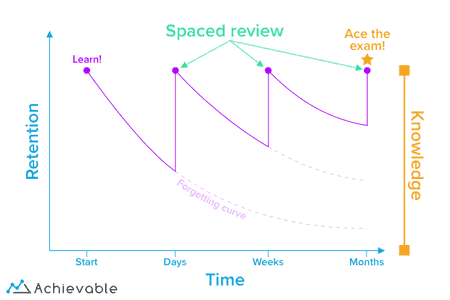
Here’s how it works: Think about how a memory of some material fades out slowly over time. It turns out that repeating exposure to that material just before you would naturally forget it actually strengthens the memory, and it will last longer before you would forget the next time. By studying the same material with more and more time between exposures to it, you can make memories very strong.
To help space out material, switch up topics: don’t stick to one topic for a whole session. Study various things in each study session.

Quiz yourself. Test yourself or have someone test you on the material to find out your strengths and weaknesses. Actively recalling material in this way will help your brain learn better and remember more.
Break down long items into smaller pieces to help the memorization process.
Exercise your mind by playing games that focus on handling information correctly and quickly. Provide yourself with different forms of stimulation throughout the day, and keep a handle on your stress levels using mental/physical preparation (LINK TO ABOVE).
It’s best to review material right after class when it’s still fresh. That way, you can outline or summarize it easily and commit it to memory.
Going beyond your study schedule, mind/body prep, study group, and memorization strategies… Being able to read material effectively and take exceptional notes are critical tasks for studying. Here’s some tips on mastering both.

Here’s a strategy for reading material. The idea is to make sure you’re covering everything.
Start with SURVEY: glance through the chapter.
Then, QUESTION by making each heading in the material into a question.
READ the chapter while trying to answer the questions you made from the section headings.
RECITE the answers to questions verbally.
REVIEW the chapter to make sure you have included all the main ideas.
The “3R” method is also common – it’s similar to “SQ3R” but uses only the “Read, Recite, Review” portion.
Similar to “SQ3R,” this simply changes the first 2 points and adds a RECALL step:
Overview
Key ideas
Read
Recall
Reflect
Review
Finish the following steps, then read the material fully. This can help you determine the context for the reading material, identify important points, and figure out key ideas in the reading before you begin.
Start with the TITLE.
Scan the HEADINGS and subheadings to see about what you’ll be reading.
Move on to reading the INTRODUCTION.
Read EVERY FIRST SENTENCE of every paragraph.
Look for VISUALS/VOCABULARY that are important in the material.
Read through the END-OF-CHAPTER questions.
Look at the SUMMARY of the chapter.
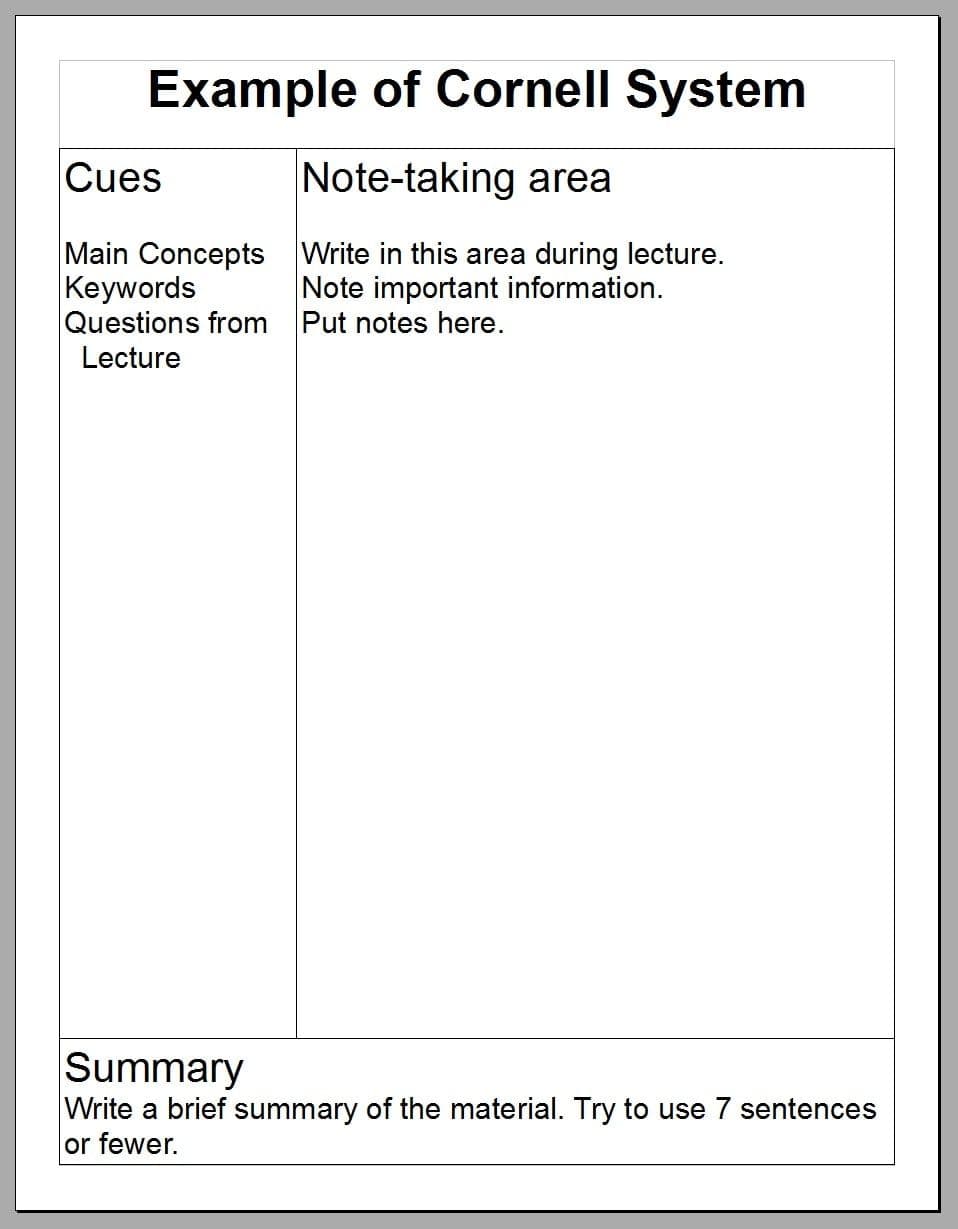
The Cornell method works by dividing each page into sections for in-class note taking. Begin by dividing each page into 3 sections: left, right, and bottom. On the left side, write cues and questions from lecture. Do this within 24 hours of the lecture. The right side is the note-taking area. Write in this note-taking space during lecture. Finally, write a brief summary of the page’s material in the bottom – no more than 7 sentences.
To study, cover the notes and try to recall the information based on questions or cues from the left side. This works for studying content from books, videos, slideshows, and more.
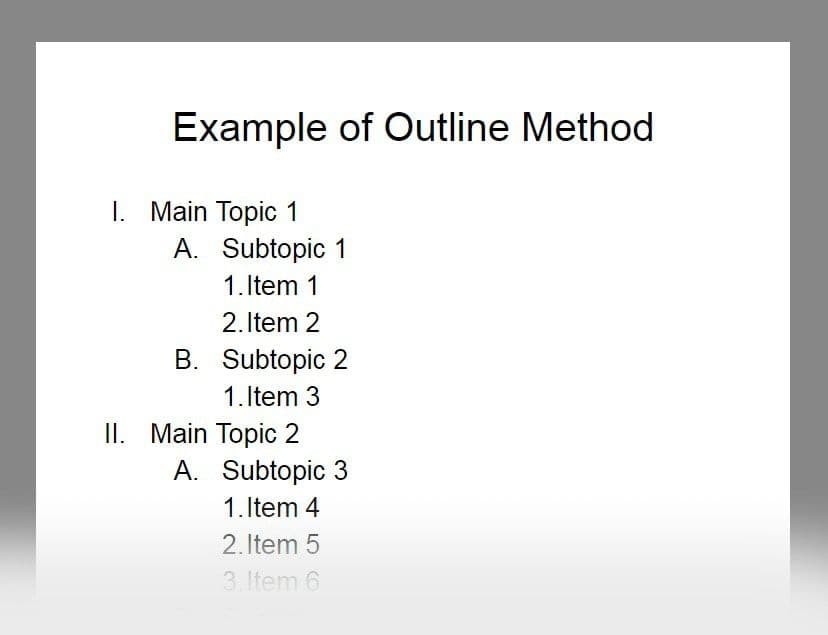
This is the old, tried-and-true method of taking notes. Create an outline using capital and lowercase numbers to indicate relative importance of items. Start with Roman number I, then II, and so forth. Indent each sub-level. Under each Roman numeral, label sub-points with capital letters, starting with A. Next, use the numbers 1, 2, 3, etc. For instance:
Leave extra space under each heading section so you can go back and fill in additional information as needed.
It’s easy to use an outline as great study tool. You can review the outline and write a summary. It’s also easy to create outlines if you’re taking notes from a textbook or well-organized material with headings – this makes it quite natural. Outlining works well when orderly learning is top priority.
One issue with outlines is that they can force you to impose structure on material that may or may not really be present in the material. If the information is disorganized in nature, try using a different method.
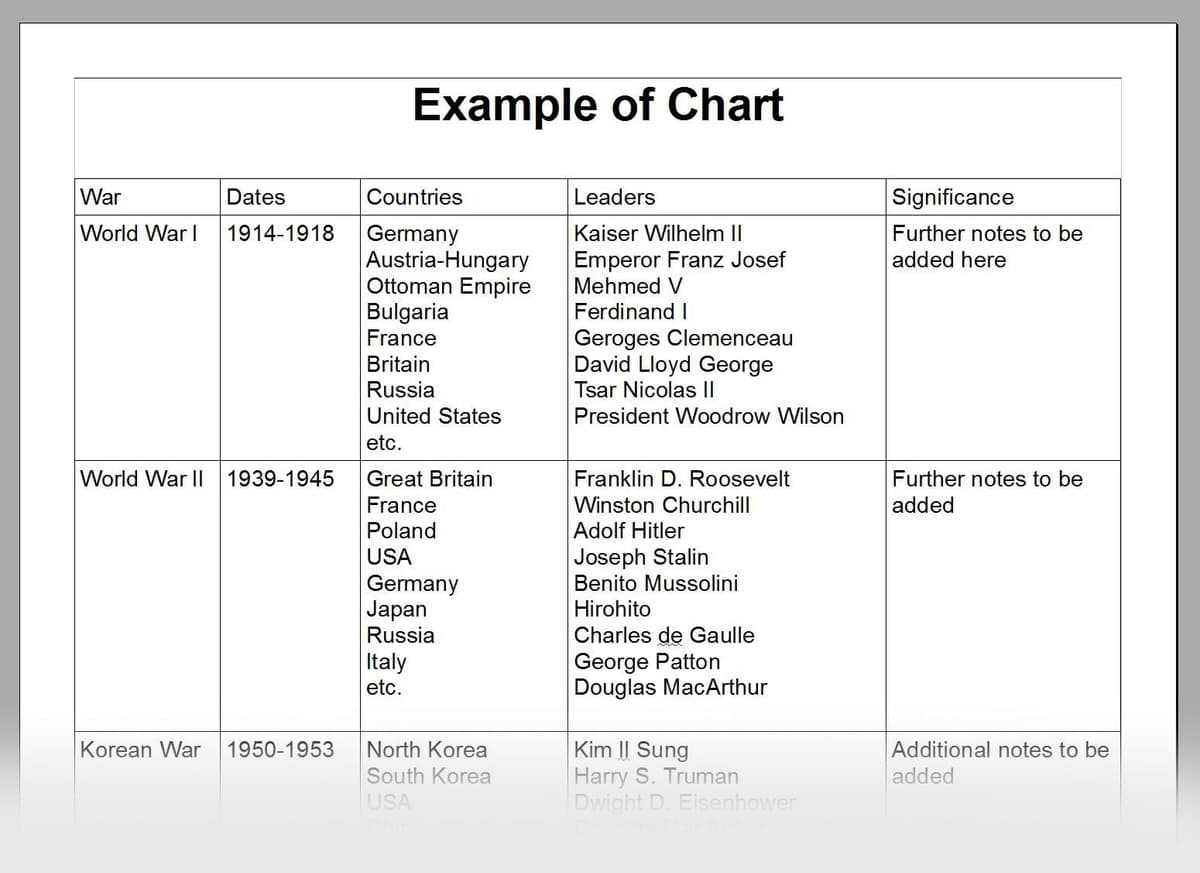
In this method, create a chart. Split notes into labeled columns. Charting requires more preparation than some other methods.
Divide a page into a number of columns, preferably 4 columns. Label each column at the top of the page with the appropriate category. For example, the four categories could be “date,” “important people,” “major events,” and “overall significance.” Now that the structure is already written, you simply need to fill in the information during lecture.
This can reduce writing so it’s possible to keep up with what’s happening during lecture.
One issue is the preparation time. It takes some time to prepare a chart since you need some knowledge of the material beforehand. Another issue is that the structure of the chart can limit which information and how much you can fill in.
For studying faster, charting is one of the best options. This may be ideal for after class when you’re putting together your notes from the material.
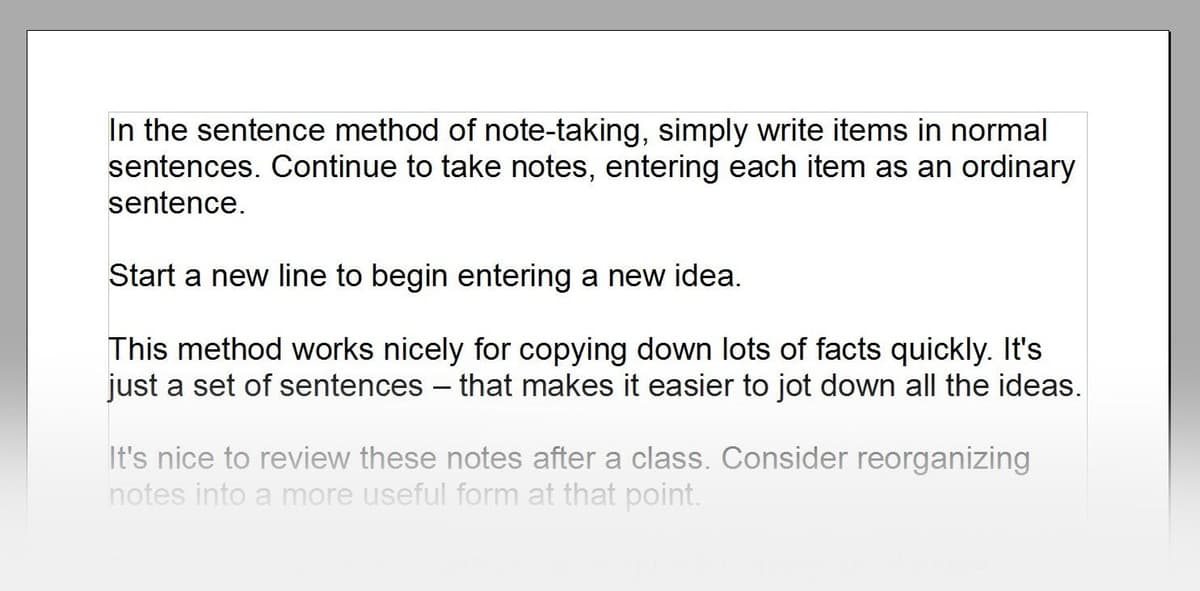
This is straightforward, nothing too fancy: simply write things in sentences like you learned in grade school. Copy down everything verbatim, more or less.
Keep up with lectures using shorthand techniques: acronyms, abbreviations, and symbols. With each new idea, start a new line.
In some ways, it’s sort of the reverse of the charting method. It’s most helpful when you’re observing a heavy presentation where each and every fact is important. If you’re learning from a book or a resource you can examine at your own pace, it’s better to use a chart or outline instead.
One drawback is that you may have to spend time immediately after creating notes to reorganize them into a more useful format since they are merely in sentence form. But for some, this is worth the effort to get notes that they can easily review.
The sentence method is great for fast-paced lecture, video, or speech – actually, you may have no choice but to use this method in some classes.
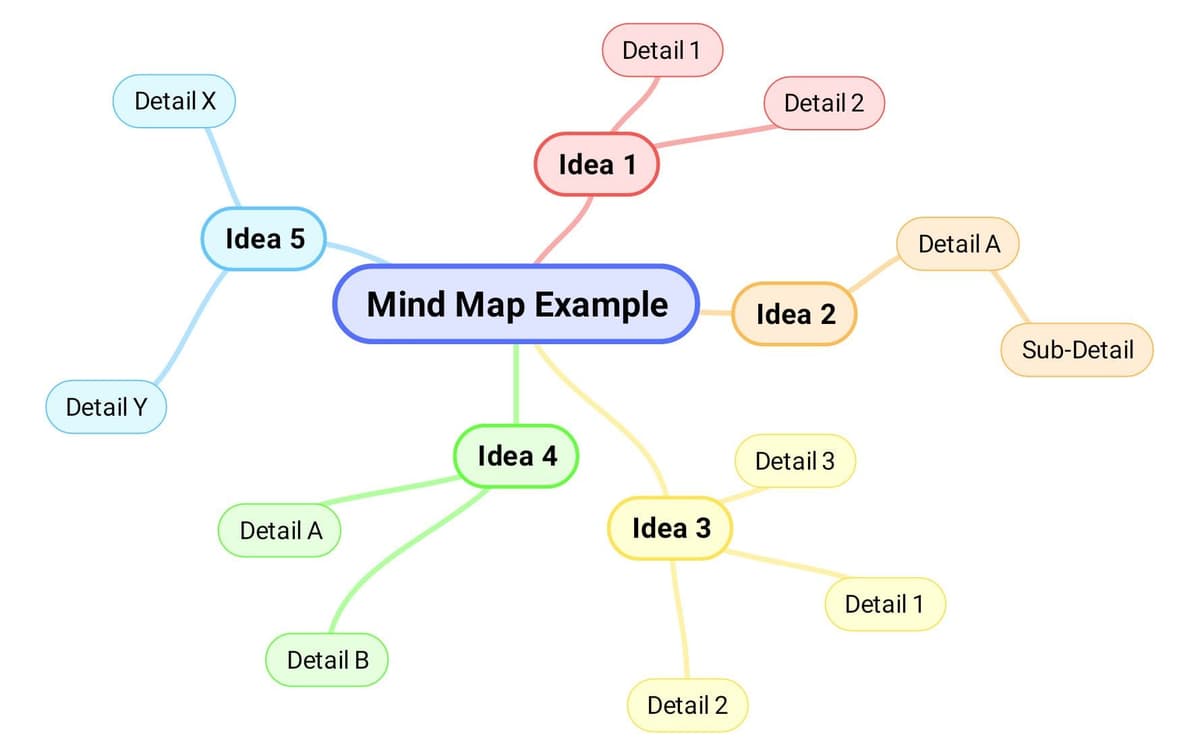
Basically, you’ll create a graphic organizer that shows connections between ideas as they radiate from a central core concept. This method is great for visually-oriented people.
Begin in the center of the page and spread out the ideas from that central point in a logical manner. For each main point, draw a curved line spreading out from the central bubble. Label the line with a 1- or 2-key phrase. Branch out with thinner lines labeled with finer details as you spread out. Use colors: make mind maps more interesting and, thus, easier to remember.
Simply follow a particular main idea outward from the center to see more notes on it. Follow further sub-ideas from there to explore details of the main concept. There’s no need to look through all the notes on the sheet, since you can see directly to details of the items you want to study.
An issue with mind maps is that they are minimalist in terms of recording facts and details. But they are nice for connecting different concepts.
With mind mapping, it’s best to have the original resource available for reference in case you require some specific fact as you’re reviewing. If you need every single detail, use the charting or sentence method first, then build a mind map.
For visual reference, mind mapping takes the cake. It’s immediately obvious what is connected to what.
Digital Trends highlights some popular mind-mapping software: Bloomfire, MindMeister, Mind Vector, iThoughts, IdeaFlip, MindNode 2, MindMup 2, SimpleMind, Mindomo, and Coggle.
Review, edit and organize your notes after class, although you should still understand the material when taking the notes initially. Possibly, keep two notebooks – one for rough draft, and one for a final draft of your notes. Neatness doesn’t count for your notes during class.
Some people type notes. Some find that handwriting increases retention. Only take notes on the computer if you’re proficient at typing. Try not to distract nearby students with key-tapping noise.
More paraphrasing is better for in-class notes. Also, ask questions and make comments during class when appropriate. Don’t rely solely on the instructor’s lecture notes.
Learn how to take notes in a way that’s helpful for you. Also, compare notes with other students after class to learn more about their methods and what they found important.
Be prepared for class.
Learn to be a good listener.
Take complete notes: write down a summary of the important ideas.
Take the best notes possible when it class, because it forces you to stay alert.
Use abbreviations to keep things memorable.
And of course, ask questions in class as they pop into your mind.

The internet has plenty of note-taking software to choose from. Try to keep your computerized notes in the cloud so you won’t lose them if your computer breaks.
Some popular note-taking packages are: EverNote, SimpleNote, OneNote, storing documents on Google Drive, Workflowy, and SpiderScribe. See more details on note-taking software: https://www.discoverbusiness.us/learning/
Achieve your goals! Most people aren’t in love with studying, but using some simple techniques gives you better use of your study time. Come up with a plan, prioritize material to study, prepare mentally and physically, and set up a place to study.
Work the basic study methods, and try out memorization techniques. Explore reading strategies and note-taking techniques. Study with friends or classmates.
Stay positive! You don’t have to be Einstein to study like a pro, but you do have to put in the time and try various methods. Everybody is unique; figure out what works for you. Study, be prepared, and be confident going into that exam. Good luck!

Learn about different finance career paths and the FINRA Exams and Top-Off Exams you must pass to pursue them.

Looking to get a high-paying job in finance? Then you’ll need to pass FINRA’s qualifying exams – we’ve got the key details and pass rates for every FINRA exam.